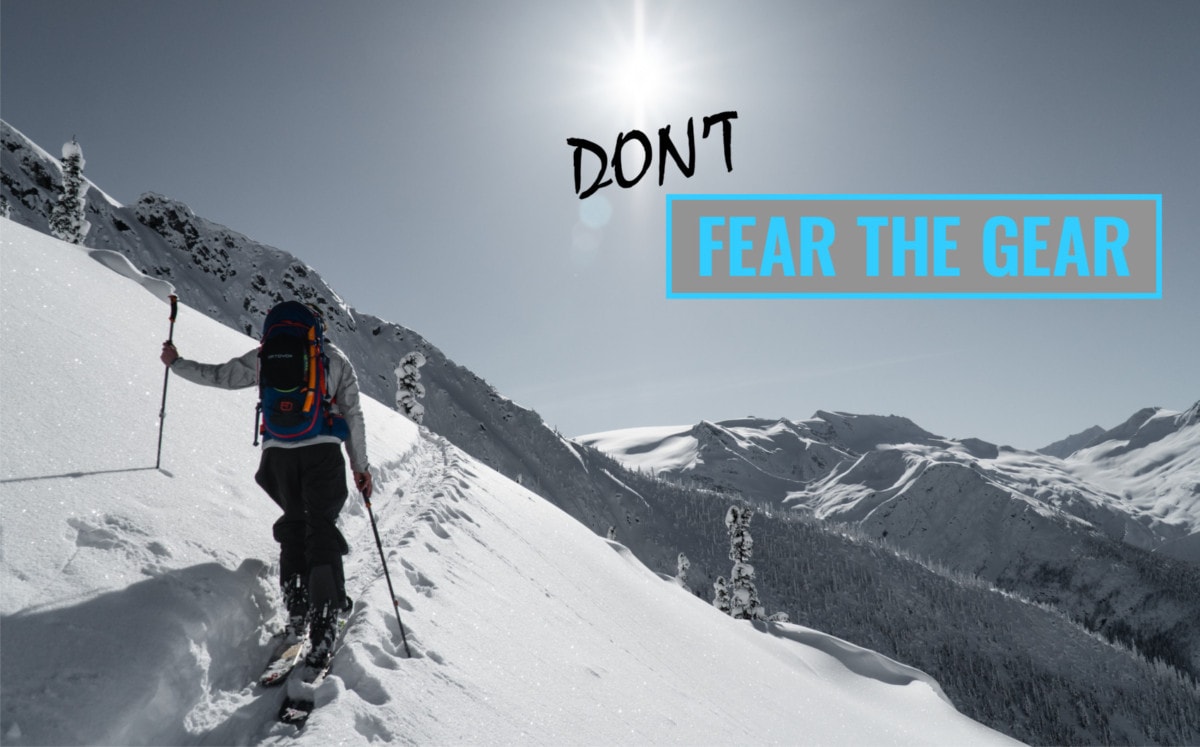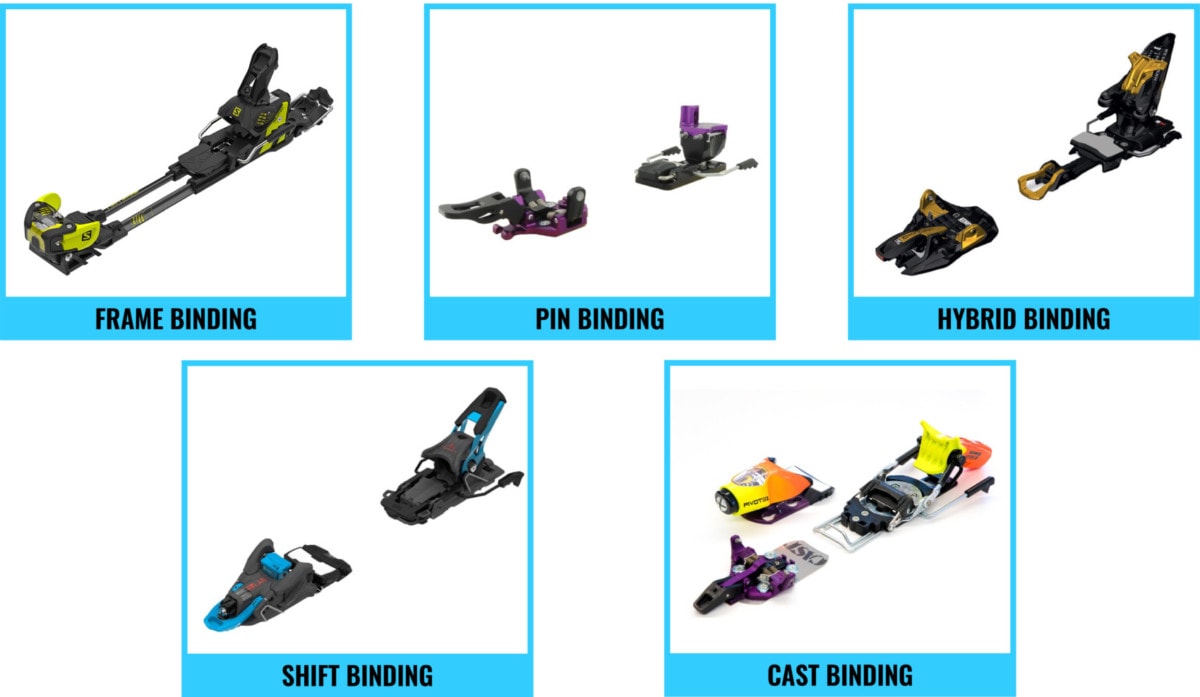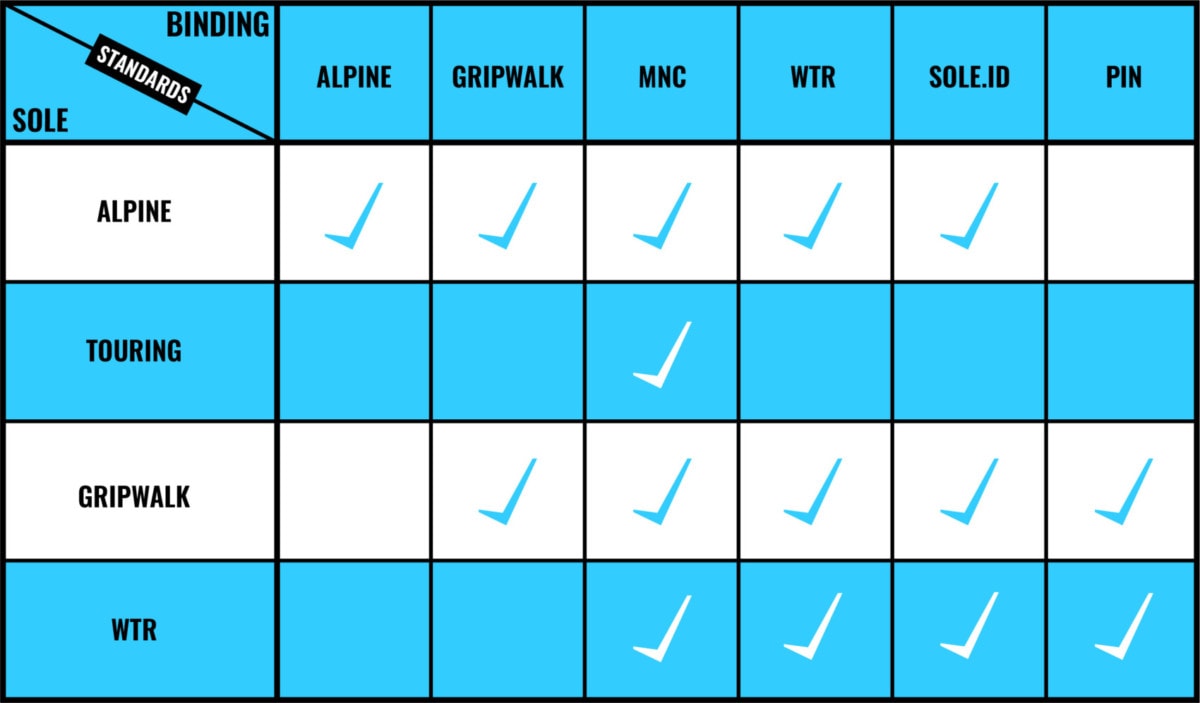Ski touring bindings are intricate mechanical contraptions that allow you to travel uphill efficiently and ski downhill while providing a consistent release. You can convert them between their two operating modes by pressing and twisting key parts. Their design is simply genius. So, you ask: how would I choose ski touring bindings? While the matter is quite complex, I’ve given my best effort to boil down the decision process to a few easy steps outlined below.
Related: How To Choose Ski Touring Boots in 2020

Pick Your Playground
I mention this in every Don’t Fear The Gear post, pick your playground. Where will you most often go ski touring? The answer will determine which binding is most applicable to your terrain type. Are you skiing lift-accessed powder right out of Whistler’s bounds? Or, are you completing a self-supported 9-day traverse from the Bugaboos to Rogers Pass?

In the former’s case, I’d recommend picking up a pair of hybrid or SHIFT bindings, perfect for both resort and sidecountry days. As for the latter, a pair of ultralight pin bindings would do the trick since you’ll be hauling those babies up and down mountains for more than a week. My best advice: choose ski touring bindings that make logical sense in the environment you’ll be skiing in most often.
Choose A Binding Category
There’s a ton of ski touring binding models available on the market. All of them can be brought under 5 umbrella categories: frame, pin, hybrid, SHIFT, and swappable.

Frame Binding: the frame binding has a standard alpine skiing toe and heel piece joined by shaped metal or polymer tubes. While this beefy setup is great for hucking cliffs and sending big pillow lines, it is rather heavy and better suited for short lift-assisted ski tours. The frame linking the toe and heel piece stiffens up the underfoot portion of the ski considerably: this alters the ski’s behavior. Frame bindings are the only category that is compatible with standard ski boots (devoid of pin inserts). By now, this binding category is pretty much obsolete.
Pin Binding: the pin binding (also called “low-tech”) uses two sets of pins to secure the skier’s toe and heel welts. Being the lightest and oldest design, those bindings excel at high-mileage tours. Keep in mind some models are known for poor reliability, inefficient power transfer on the downhill, and premature releases. Do your research before buying. Those bindings require a significant investment as they need special boots with embedded metal toe and heel inserts.
Hybrid Binding: the hybrid binding is a combination of the two options mentioned above: a light pin-style toe piece and an alpine heel piece. This arrangement provides an adequate blend of stiffness for hard-charging skiers, consistent heel release for those awkward yard sales, and low enough weight for long summit days. Like pin bindings, they require boots with pin inserts.
SHIFT Binding: the SHIFT binding, pioneered by renowned gear giant, Salomon, is a class of its own. Check this page out to see this marvel of engineering in action. It consists of an alpine-inspired toe piece with embedded front pins. Through some clever mechanism, the toe piece morphs into its pinned counterpart. The heel piece is just your plain Jane alpine setup with a nifty retracting brake design. It’s light enough to bring on longer missions, fast enough during the transitions, and skis as well as an alpine setup. One thing to note: watch out for the AFD plate adjustment on the side of the toe piece. It loosens over time and causes the binding to pre-release when flexing the ski hard. This setting has to be checked every few weeks. Like pin bindings, they require boots with pin inserts. Marker recently came out with their version of the shift binding, the Marker Duke PT coming in DIN values ranging from 11 to 16. I’ve personally never used those bindings so I’ll leave it up to you to decide if you like the product.
Swappable Binding: the swappable binding was first seen in the CAST Freetour Upgrade Kit where you have a fixed alpine heel piece and interchangeable toe pieces of an alpine and pin binding. On the uphill, you swap the alpine toe piece for the pinned counterpart. On the downhill, you replace the alpine toe piece. The CAST system provides an efficient option for touring up and a burly one for skiing down. The downside: it’s heavy and ices up frequently. You also have to toss the alternate toe piece in your pack and risk losing it. To me, it’s a little obsolete. I would always go for the SHIFT bindings first as they are much lighter, provide a faster transition, and perform as well on the downhill. Like pin bindings, they require boots with pin inserts.

My advice here is to go for the pinned binding categories (everything except the frame bindings) even if you’ve just started ski touring. To be honest, frame bindings will suck all the fun from the uphill part of the journey. You’ll end up hating ski touring. I’d usually recommend getting a pair of shift or hybrid bindings if you’re just getting into the sport.
Check The Boot Sole Compatibility
With tried and true manufacturers planting roots in most countries, no one seems to agree on a standard sole design, making matters worse when it comes to binding compatibility. Sadly, some soles aren’t certified for use with certain bindings as they either wouldn’t provide a consistent release, or they simply won’t fit in the bindings. Binding manufacturers now advertise their products using a few keywords that can be cross-referenced with sole standards. Here’s the best way to navigate the systems.
- Look up the keyword in the binding description online (GripWalk, MNC, WTR, Sole.ID). Ex: Salomon SHIFT Bindings MNC 13.
- Look up the keyword in the touring boot description online (Alpine, Touring, GripWalk or WTR).
- Cross-reference the binding sole standard with your touring boot’s sole standard using the table below to ensure compatibility.

Check The Maximum DIN Setting
You’ve seen the number scales located on both the toe and heel pieces of your bindings. This is the DIN setting (stands for Deutsches Institut für Normung). This setting is the industry-recognized scale for the release force of ski bindings. The setting makes the difference between a cushy fall and a torn ACL. By all means, please go to a professional ski technician if you’re not familiar with the system. Otherwise, there’s an online DIN calculator you can use to determine a safe DIN setting. This is only a starting point. Most skiers tweak the setting based on the binding’s model and experience level. For instance, the calculator recommends a DIN setting of 8.5 for my weight, height, experience level, and boot length. I started with that value and increased it in increments of 0.5 until I was releasing out of my bindings at the desired pressure. I ended up with a DIN setting of 9.5 for my pin bindings and 10.5 for my SHIFT bindings.

Now that you’ve narrowed it down to a few models, take a moment to check the maximum DIN setting located on the manufacturer’s website. Ensure that the binding supports the setting that you usually run on your alpine setup. Honestly, most ski touring bindings run DINs up to 12-13. This is plenty enough for 99% of skiers.
Go Skiing
You’ve managed to choose great ski touring bindings. Now, go skiing! There’s no better way to know if you’ve picked the right one than to test it out in the field. Remember to tweak your DIN settings. Don’t worry if you’re not feeling them at all: there’s a savvy used market for ski touring bindings.

Related Articles
– How To Choose Touring Skis in 2024
– How To Choose Ski Touring Boots in 2024
– How To Get Into Ski Touring (Backcountry Skiing)